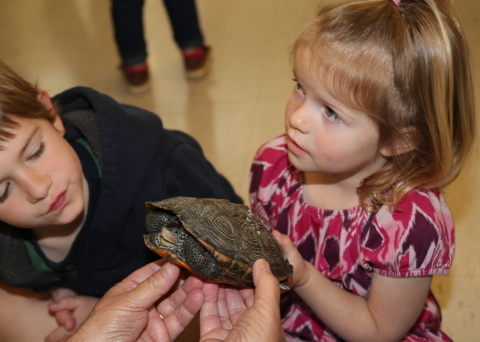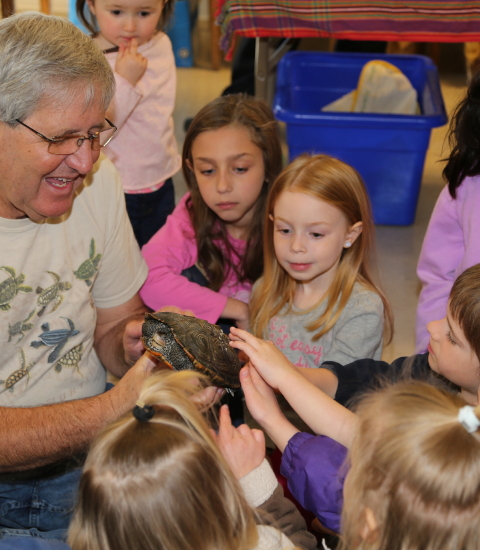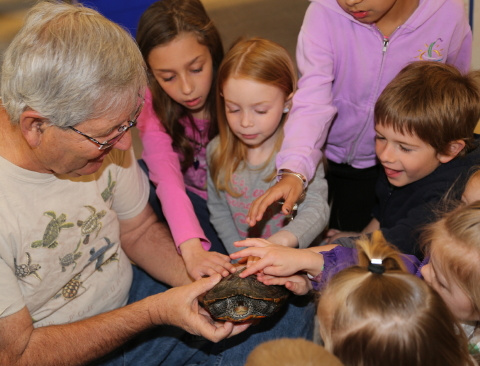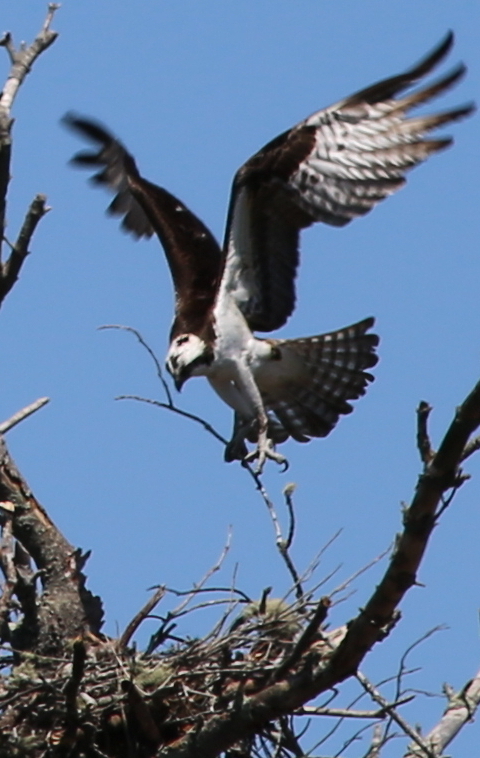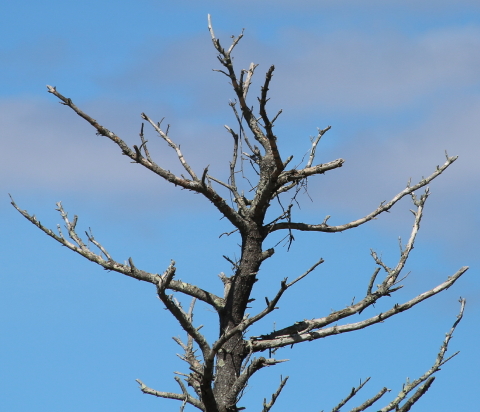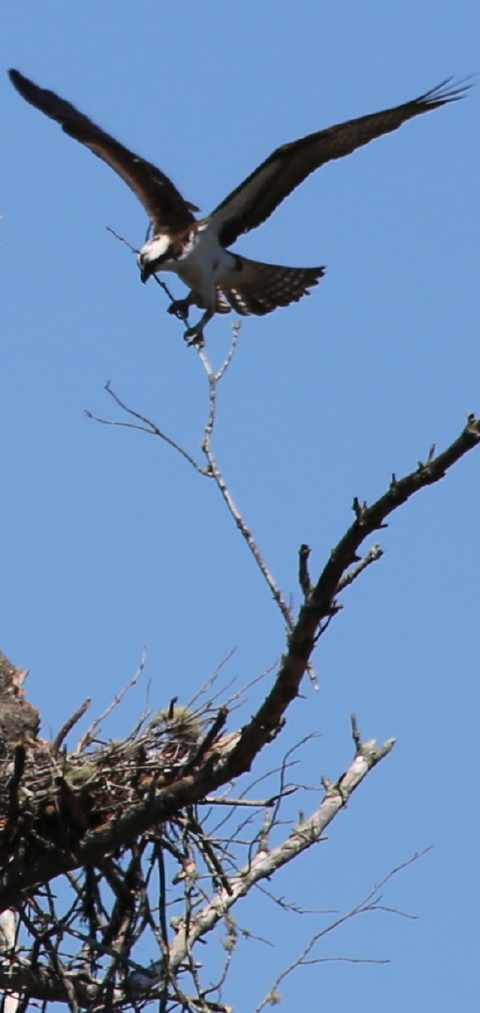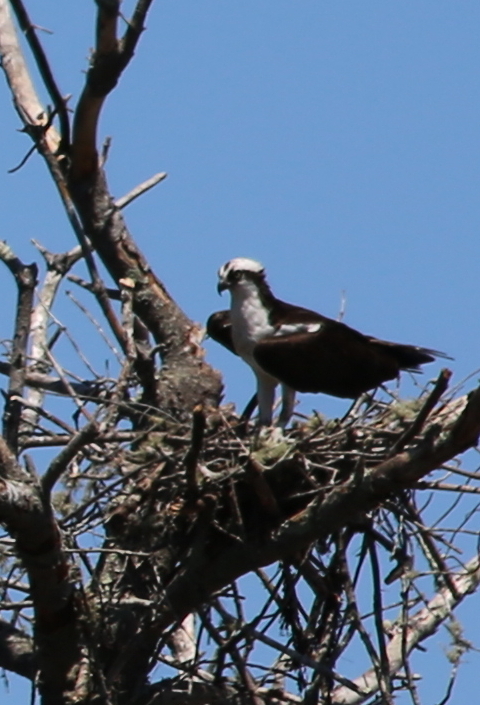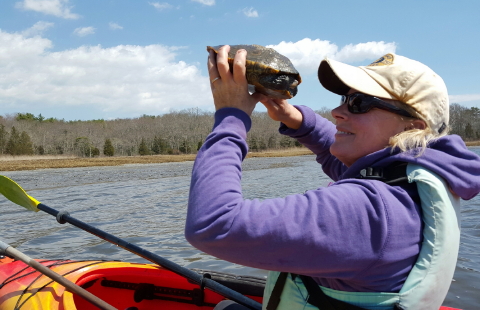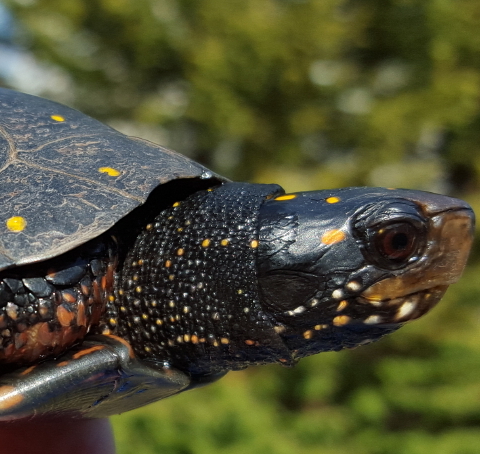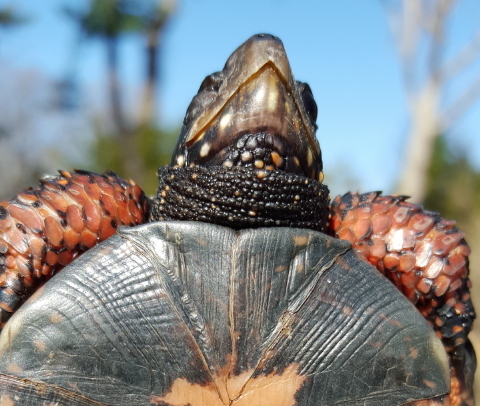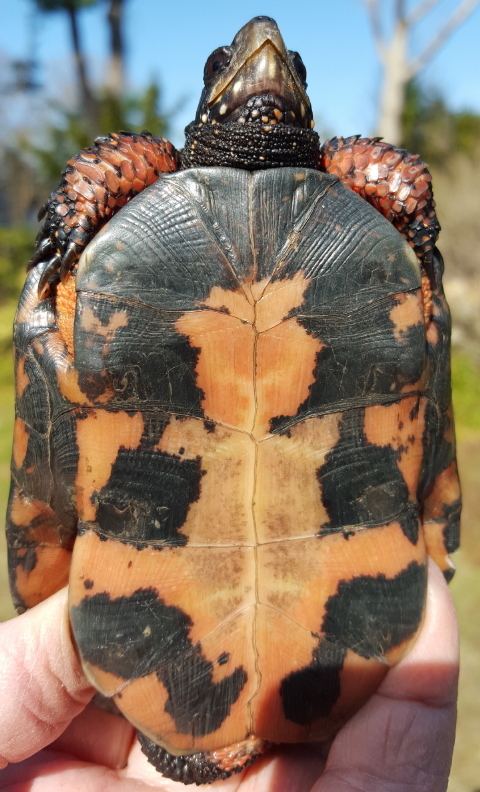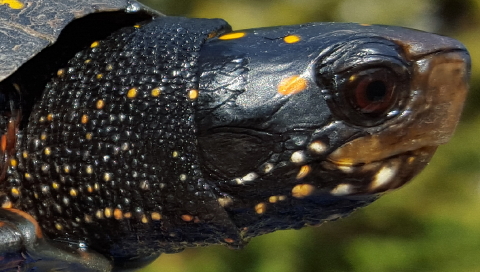
Spotted Turtles #206 & #207 Changed from 2014 to 2015Â
On April 11th we recaptured adult Spotted Turtle #206 at 11:15 in the morning at a SouthCoast bog. Â At 3 in the afternoon we recaptured adult Spotted Turtle #207 at the same bog. Â We were surprised at the changes illustrated above that suggested a transformation from female to male gender characteristics. Â One such turtle would have been a deep puzzler, but two turtles, one after the other, proved a real shocker to the Turtle Journal team.
CLICK PHOTOGRAPHS FOR HIGHER RESOLUTION
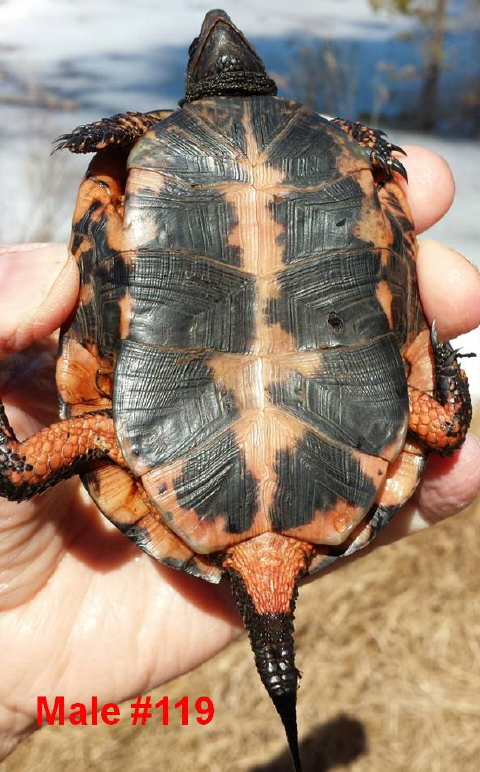
Typical Male Spotted Turtle #119 (April 2015)
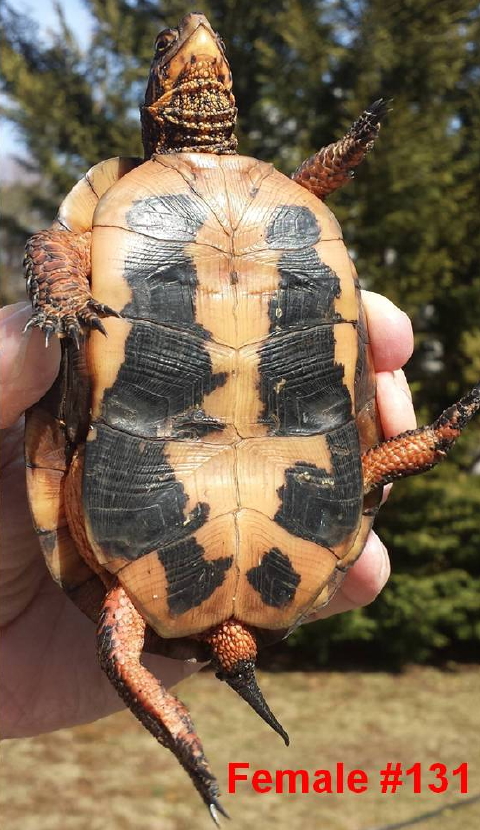
Typical Female Spotted Turtle #131 (April 2015)
One of the defining characteristics of spotted turtles is gender dichromatism with females flashing a bright colored chin and neck, and males sporting a dark, drab chin and neck. Â Yes, there are other gender signs, such as the thick, large male tail, the more posterior location of the male anal vent, and the male concavity of the plastron’s abdominal scutes. Â Still, color difference is a quick and easy indication of gender. Â All of these gender characteristics are illustrated in two images immediately above for Male #119 and Female #131.
So, when those color characteristics change for an adult spotted turtle, or two adult spotted turtles, in a single year, it gets our attention.

Spotted Turtle #206 April 2014 and April 2015
We first observed and marked Spotted Turtle #206 at the SouthCoast bog mating aggregation on the morning of 6 April 2014. Â We next saw this turtle 11 April 2015 basking with female Spotted Turtle #150. #206 had experienced a significant growth spurt and had changed its chin and neck color. Â We confirmed this turtle’s identity by its individualized marginal notches (its number), as well as photographs of its carapacial scute shapes and the positions of its yellow dots.
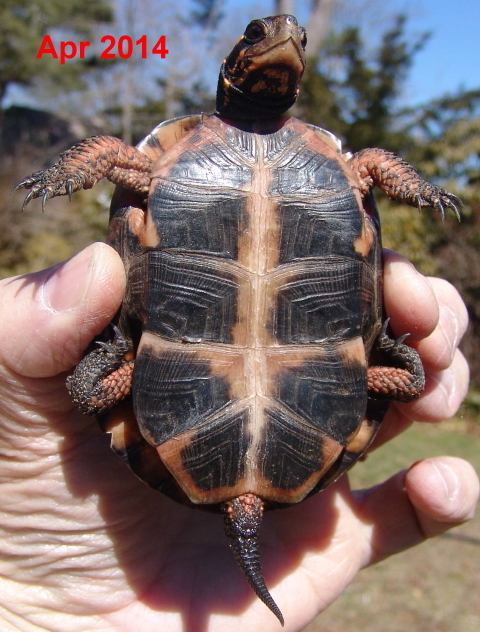
Spotted Turtle #206 Plastron April 2014
In April 2014 we assessed this turtle as approximately 6 years old based on size and on annual growth lines. Â #206 measured 8.71 centimeters straight-line carapace length, 6.69 centimeters maximum width, and 7.76 centimeters plastron length. Â The weight was 96 grams.
With an orange chin and neck, we noted her gender as female, but in the observation remarks, the recorder wrote, “Female with big tail.”
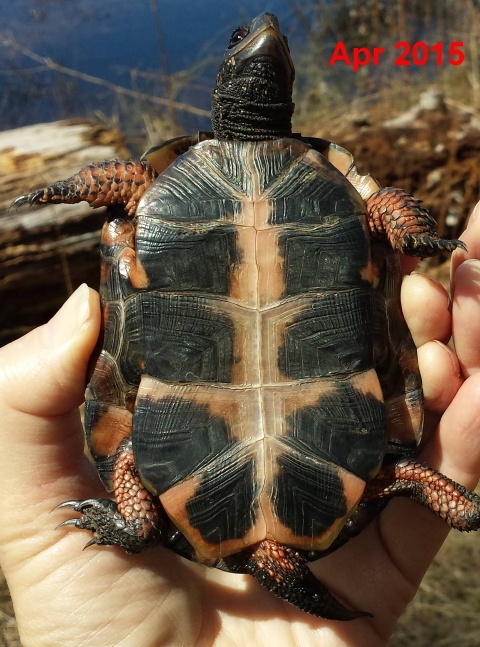
Spotted Turtle #206 Plastron April 2015
When we saw #206 next on 11 April 2015, this turtle had transformed its chin color to drab darkness and its neck color to dark, as well. Â The growth spurt proved substantial. Â The straight-line carapace length increased to 10.14 centimeters (nearly 1 1/2 centimeters), the width measured 7.51 centimeters, and the plastron length reached 8.78 centimeters. Â #206 weighed 128 grams (a 1/3 increase). Â We observed a concavity in the abdominal scutes and an apparent male tail. Â We assessed #206 as a male spotted turtle.

Spotted Turtle #207 April 2014 and April 2015
We originally observed Spotted Turtle #207 on 6 and & 7 April 2014 swimming in the SouthCoast bog.   We gauged the age of #207 at approximately 9 to 10 years based on annual growth lines and size. We next saw #207 on 11 April 2015.  This turtle grew about 10% in the last year.  As with Spotted Turtle #206, we confirmed #207’s identity by its individualized marginal notches (its number), as well as photographs of its carapacial scute shapes and the positions of its yellow dots. She also had lost her left rear limb below the “knee” joint.

Spotted Turtle #207 Plastron April 2014
Chin and neck of Spotted Turtle #207 were colorful orange with no detectable abdominal cavity. Â We assessed #207 as female. The turtle measured 9.11 centimeters straight-line carapace length, 6.90 centimeters maximum width, and 8.17 centimeters plastron length. #207 weighed 114 grams.

Spotted Turtle #207 Plastron April 2015
When we observed #207 on the afternoon of 11 April 2015, chin and neck had turned charcoal black and a slight concavity had appeared in the plastron’s abdominal scutes. Â The tail seemed larger and thicker. We assessed #207 with full male characteristics. Â He stretched 10.03 centimeters straight-line carapace length, 7.44 centimeters maximum width, and 8.81 centimeters plastron length. Â #207 weighed 130 grams (a 14% increase since April 2014).

Spotted Turtle Study Kit
We continue to monitor the delayed emergence of spotted turtles in this SouthCoast bog due to the record smashing winter and the late spring. Â Each turtle that we observed last year, our first season at this particular bog, was individually marked, so that we can follow its progress upon recapture. Â We will examine recaptured turtles very carefully to determine whether other adult spotted turtles have changed their secondary gender characteristics, especially the signature female spotted turtle orange color of their chins and necks.
